Flowers & Tea
- Katrina Wild

- Jul 2, 2024
- 10 min read
Updated: Nov 28, 2024

Flowers have long been woven into the fabric of cultures worldwide, inspiring the art of Japanese ikebana, enriching paintings, poetry, and celebrations, and serving as a love language that conveys deep emotions. When skillfully infused with tea, flowers create spectacular infusions with rich aromas and complex flavours, transporting us to vibrant gardens and serene meadows. Join us on a journey through the enchanting world of flower teas, from classics like scented jasmine pearls and osmanthus oolong to blooming tea and traditional blends like Eight Treasures. Discover lesser-known delights such as sakura sencha from Japan, lotus green tea from Vietnam, rare gems like banana shrub oolong from Taiwan, and even Camellia sinensis flower itself.
Photo: Pinterest. Chabana (茶花) is a flower arrangement explicitly done for tea ceremonies.
Techniques of Scenting Tea
Scenting tea is a meticulous art that involves infusing tea leaves with the delicate fragrance of flowers. Typically, high-quality green, white, or oolong tea leaves are carefully layered with fresh or dried flowers like jasmine, rose, or osmanthus. This layering allows the tea leaves to absorb the floral essence slowly over time. Each scenting process can take several weeks, with the tea master repeating the layering and scenting steps multiple times to achieve the desired aromatic profile and depth.
For instance, in the production of jasmine tea, the flowers must be used the same day they are picked, as their peak aroma lasts for about 9-12 hours. The process typically takes place from late spring to early summer, depending on the region. In Fujian Province, green tea is harvested in early April and stored until the jasmine blossoms bloom around late May to early June. In Yunnan Province, the process starts earlier, producing jasmine tea almost two months ahead of Fujian, resulting in a stronger tea character.
The scenting involves a ratio of 60% tea to 40% flowers, layered five times within an hour. The tea sits for 5-6 hours to absorb the fragrance, then is mixed to release heat and moisture, and sits again for another 5-6 hours. This layering and mixing are repeated over 5 times, taking at least 2-3 weeks to complete.
Authentic scented teas can retain their fragrance through multiple infusions, a testament to their quality and the skill involved in their creation. This traditional method contrasts with modern flavoured teas, where dried flowers and fruits are often mixed with essential oils to impart aroma quickly but lack the depth and longevity of scent found in true scented teas. The history of scented tea dates back centuries, with its revival during the Ming Dynasty and its integration into various cultural traditions across Asia. Today, authentic scented teas are prized for their ability to retain fragrance through multiple infusions, showcasing the artistry and dedication involved in their production.

Photo: China Today.
Mo Li 茉莉花: Jasmine

Image: Tea Vivre.
Jasmine, known as Mo Li, is perhaps the most popular flower used for scented tea. The origins of jasmine tea can be traced back to the Song Dynasty (960-1279), when the trend for scented teas began to flourish. Although dozens of scented tea varieties emerged during this period, a lot of them eventually faded away, with only a few enduring in popularity. Among these, jasmine tea became the favourite. Initially, its popularity was driven by the upper class, but during the Qing Dynasty (1644-1911), it became widely enjoyed by people from all walks of life. Empress Dowager Cixi had a particular fondness for jasmine tea and often gifted it to foreign diplomatic envoys, further elevating its status and popularity among the general population. By the 1850s, jasmine tea became very popular in northern China.
It's important to note that jasmine flowers are not native to China. Around 304 AD, during the Jin Dynasty, jasmine flowers were imported from Central Asia and first propagated in the warm regions of Yunnan, Guangdong, and Fujian Provinces. By 1880, responding to jasmine tea’s surge in popularity, Taiwan and Sichuan began producing their own jasmine flowers from bushes transplanted from Fujian. Today, Sichuan and Fujian remain major centers of jasmine tea production, but the largest jasmine fields are now in Guangxi Province, particularly Hengxian, known as "the Chinese hometown of jasmine." Jasmine flowers are also grown in Yuan Jiang County, Yunnan Province, where the warmer climate allows for an earlier harvest starting in March.
The scenting process of jasmine tea involves layering jasmine blossoms with green, white, oolong, or black tea - quite versatile. The tea leaves absorb the sweet, floral fragrance, creating a light and aromatic brew that can be enjoyed both hot and iced. Modern jasmine tea varieties include dragon pearls, Mao Feng, Silver Needles, Taiwanese oolongs, and even dark tea (heicha). Single-petal and double-petal jasmine cultivars are primarily used for scenting, with double-petal being more common due to its stronger fragrance. The intricate scenting process includes stages such as picking, maintaining, sieving, and final scenting (Ti Hua), often repeated three to five times for high-grade teas. The jasmine flowering season from May to October requires precise picking techniques, where flowers are harvested before blooming to ensure a robust aroma. The result is a tea with a sweet aftertaste and lingering floral notes, perfect for capturing the vigor and beauty of spring.

Photo: Seven Cups. Scenting Jasmine Pearls tea.
Gui Hua 桂花: Osmanthus
Photo: Mother Earth Nursery, Gifel Strong, Live Strong.
Gui Hua, or Osmanthus, is a flower that infuses tea with a sweet and fruity aroma, often blended with green tea and oolong to create Gui Hua Lu Cha and Osmanthus Oolong. The subtle sweetness of osmanthus enhances the natural flavours of the tea, resulting in a brew that is both refreshing and soothing, making it an ideal choice for a relaxing afternoon. Fresh osmanthus flowers bloom from late summer to autumn and are closely associated with the Mid-Autumn Festival, celebrated on the 15th day of the 8th month in the lunar calendar. This connection to the harvest season is reflected in various Mid-Autumn recipes featuring osmanthus, such as glutinous rice tang yuan, osmanthus wine, and jam. The cultural significance of osmanthus is also captured in the Chinese idiom 吳剛伐桂 (Wu Gang Dai Gui), symbolizing endless toil, based on the myth of Wu Gang, who is condemned to chop down a regenerating osmanthus tree on the Moon, akin to the story of Sisyphus. Osmanthus tea, with its calming properties and rich cultural heritage, is a delightful and meaningful addition to any tea lover's collection.
Ju Hua 菊花: Chrysanthemum
Photo: Yunnan Sourcing (Royal Chrysanthemum and Big Snow Mountain Black Tea Dragon Ball)
First cultivated in China as early as 1500 BCE, Chrysanthemum gained popularity as a tea during the Song Dynasty. In Chinese tradition, once a pot of chrysanthemum tea is brewed, hot water is often added to the flowers multiple times, each infusion producing a slightly milder tea. Chrysanthemum is commonly found in blends with Camellia sinensis, such as puerh and red tea. Ju Hua Puerh, a traditional Chinese tea, combines puerh tea with chrysanthemum flowers, adding a light, floral note to the earthy and robust flavor of puerh. This creates a balanced tea that is both fragrant and rich in taste. Chrysanthemum tea is cherished for its cooling properties and is believed to aid in digestion and relaxation.
Gong Yi Cha 工艺花茶: Blooming Tea

Blooming tea, or Gong Yi Cha, is a visually stunning tea that is as much a feast for the eyes as it is for the palate. Hand-tied bundles of tea leaves and flowers unfurl into beautiful blossoms when steeped in hot water. These artistic creations often feature flowers such as jasmine, lily, and globe amaranth. Blooming tea offers a delicate flavour and a mesmerising tea-drinking experience, perfect for special occasions. Flowering tea is generally served in containers made of glass or similar transparent materials so that the blooming effect can be seen.
Photo: Gardener's Supply.
Ba Bao Cha 八宝茶: Eight Treasures
Ba Bao Cha, or Eight Treasures Tea, is a rich blend that artfully combines various ingredients, including flowers, fruits, and herbs. Commonly used components are green tea, goji berries, jujube dates, dried longan, chrysanthemum flowers, hawthorn berries, licorice root, rose petals, rose buds, tangerine peel, ginseng, and rock sugar. Renowned for its nourishing properties, this tea offers a sweet and floral brew that is both invigorating and healthful. The beauty of Eight Treasures Tea lies in its flexibility; you can create your own unique blend by combining any eight ingredients (albeit the base typically consists of red dates, goji berries, chrysanthemum flowers, and dried longan). In Chinese culture, drinking hot water and consuming soups are believed to cleanse the body of toxins and promote well-being. Similarly, Eight Treasures Tea is celebrated for its ability to restore chi (energy) and revitalize the body. These herbal blends vary by maker and region, but they consistently aim to support wellness and internal balance, making them a gentle, easy-to-drink option for overall health.
Photo: Kelly Branyik, 自治区文化和旅游厅.
There is also Five Flower Tea (五花茶; Ng Fa Cha), which serves a more specific purpose out of the more broad herbal teas 涼茶 Leung Cha in Guangdong. It’s more focused on maintaining the health of your digestive tract. Different people make them with various flowers, with a minimum of five of them. Some recipes might suggest flowers such as kapok, kudzu, plumeria, Japanese honeysuckle, and heal-all.
In Korean culture, flower infusions are also highly cherished, with a variety of options such as dohwa-cha (peach flower), gukhwa-cha (chrysanthemum), maehwa-cha (plum flower), yeonhwa-cha (lotus flower), and mongnyeon-cha (magnolia). One notable blend is giguk-cha (기국차), which combines goji berries and chrysanthemum, and sometimes includes black sesame and jakseol black tea leaves. To read more about Korean teas, check out Lorela's blog HERE.
Mei Gui 玫瑰: Rose

Rose tea, or Mei Gui, is a timeless classic beloved for its delicate and romantic aroma. Rose petals are often blended with red tea, white tea, or oolong, creating a fragrant and soothing infusion. The floral notes of the rose complement the tea's natural flavours, resulting in a harmonious and elegant drink. Rose tea is cherished for its calming effects and is often enjoyed as a relaxing and aromatic treat.
Photo: Cha Baby!
Hanxiao Hua 含笑花: Banana Shrub
Photo: Day Break 18 Tea House, Tainan, Taiwan. 奉茶·十八卯茶屋. Katrina Wild.
Hanxiao Hua Oolong is a unique and rare tea scented with the flowers of the Michelia figo, commonly known as the banana shrub. In Chinese, the flower's name literally translates as the "contained smile flower". These flowers emit a strong banana-like scent, creating a distinctive and exotic flavour profile when combined with oolong tea. The flower is native to China's Guangdong province, and yet so far I have only encountered this rare gem in Taiwan. This tea offers a wonderful and unusual tasting experience, transporting the drinker to lush, tropical landscapes.
Vietnam: Lotus Flower Green Tea (Trà Sen)
Photo: HIỀN MINH Tea House, Hanoi, Vietnam. Katrina Wild.
In Vietnam, the lotus symbolises purity, beauty, and good fortune, and its significance is deeply rooted in the tradition of lotus tea, or "Trà Sen." This exquisite tea originated around the Nguyen Dynasty for King Tu Duc, with a captivating preparation method. Legend states that servants would row to the lotus ponds at night to fill the blossoms with green tea, tying the petals with silk strings to let the tea absorb the lotus's sweet scent overnight. Traditionally reserved for royalty, lotus tea earned its title as the "drink of kings." Today, lotus green tea is cherished for its delicate fragrance and sweet, refreshing flavour, embodying purity and elegance in Vietnamese culture. At HIỀN MINH Tea House in Hanoi, you can partake in a lotus tea-making workshop during June and July. Founders Yen and Hung cultivate lotus in their hometown, 40 km outside Hanoi, where early morning harvesting (4-6 AM) captures the dewy freshness of the blossoms. It takes around 1,500 blooms to produce 1 kg of tea. The flowers are meticulously processed, with the petals removed and pollen (also called lotus rice sometimes) mixed and scented with high-quality green tea from regions like Thai Nguyen, Ha Giang, and Bao Loc. In HIỀN MINH ’s case, they produce their green tea in the high mountain areas of Ha Giang, northern Vietnam, where you can encounter many ancient wild tea trees. The scenting process spans two days for each layer of scenting and is repeated seven times, followed by a six-month maturation period for the fragrance to fully develop. At HIỀN MINH, tea leaves are packed into fresh lotus flowers and frozen for an authentic taste. Additionally, you can experience a profound lotus meditation with tea with Hung and Yen, immersing yourself in this ancient Vietnamese tradition.
Japan: Sakura Sencha 桜煎茶
Sakura Sencha, a delightful blend of spring sencha and cherry blossom. This tea combines the fresh, umami-rich notes of sencha with the subtle, floral aroma of cherry blossoms, evoking the essence of Japanese springtime. One sip transports you to a serene sakura-filled landscape reminiscent of sakura mochi. The sakura season has been celebrated in Japan since ancient times, symbolising hope and new beginnings. Enjoy sakura sencha hot or cold, and pair it with desserts!
Photo: Kyoto Obubu Tea Farms.
Camellia Sinensis: Tea Flower
Did you know you can enjoy tea made from the flowers of the tea plant itself, Camellia sinensis? Though not widely known, it's a treat! For example, there's Chinese beencha, where camellia sinensis flowers are pressed into cakes. Opening the wrapper releases a wonderfully fresh, floral fragrance. When brewed, the flowers unfurl and produce a sweet, slightly nutty liquor. Another noteworthy mention is the tea flower sencha crafted by TEA FACTORY GEN in Onomichi, Hiroshima, Japan. Each October, tea flowers are meticulously hand-picked from fields, imparting a gentle fragrance to the tea naturally, without any artificial additives—a true display of craftsmanship!
Photo: Katrina Wild, TEA FACTORY GEN.
Ren Sheng 人參: Ginseng

Though not a flower but a root, we felt like ginseng deserves mention in this series for its sweet, floral, and vibrant palette. Ginseng Oolong, or Ren Sheng Wulong, merges the rich, full-bodied flavor of oolong tea with the invigorating properties of ginseng. Renowned for its energizing effects, ginseng is a popular choice for those seeking a boost in vitality and alertness. This unique combination is highly favored in both Taiwan and China.
Photo: To Tsai, Greece.
Phoenix Oolongs from Guangdong




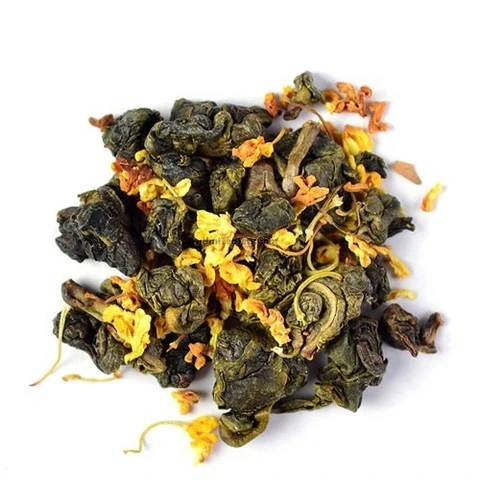
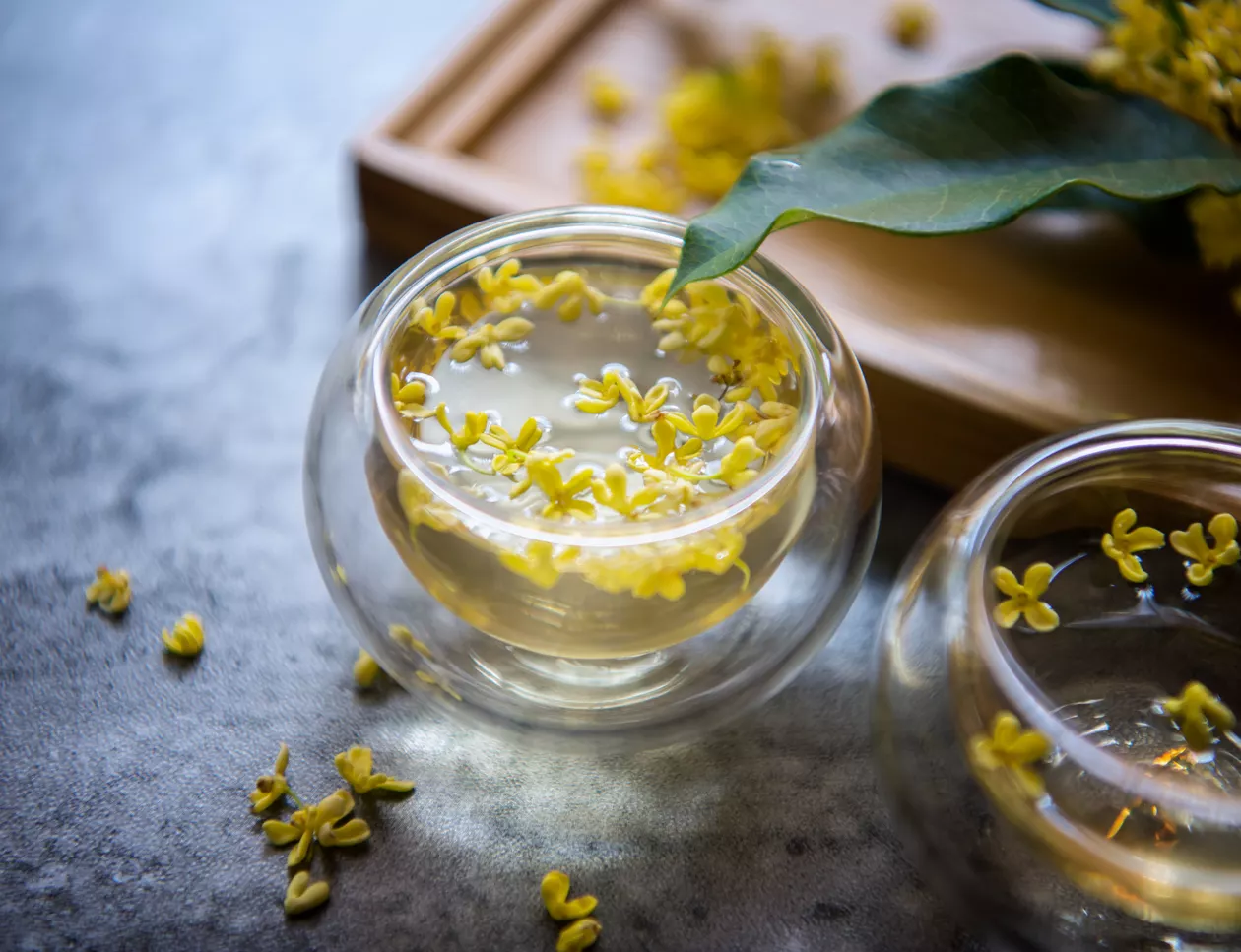


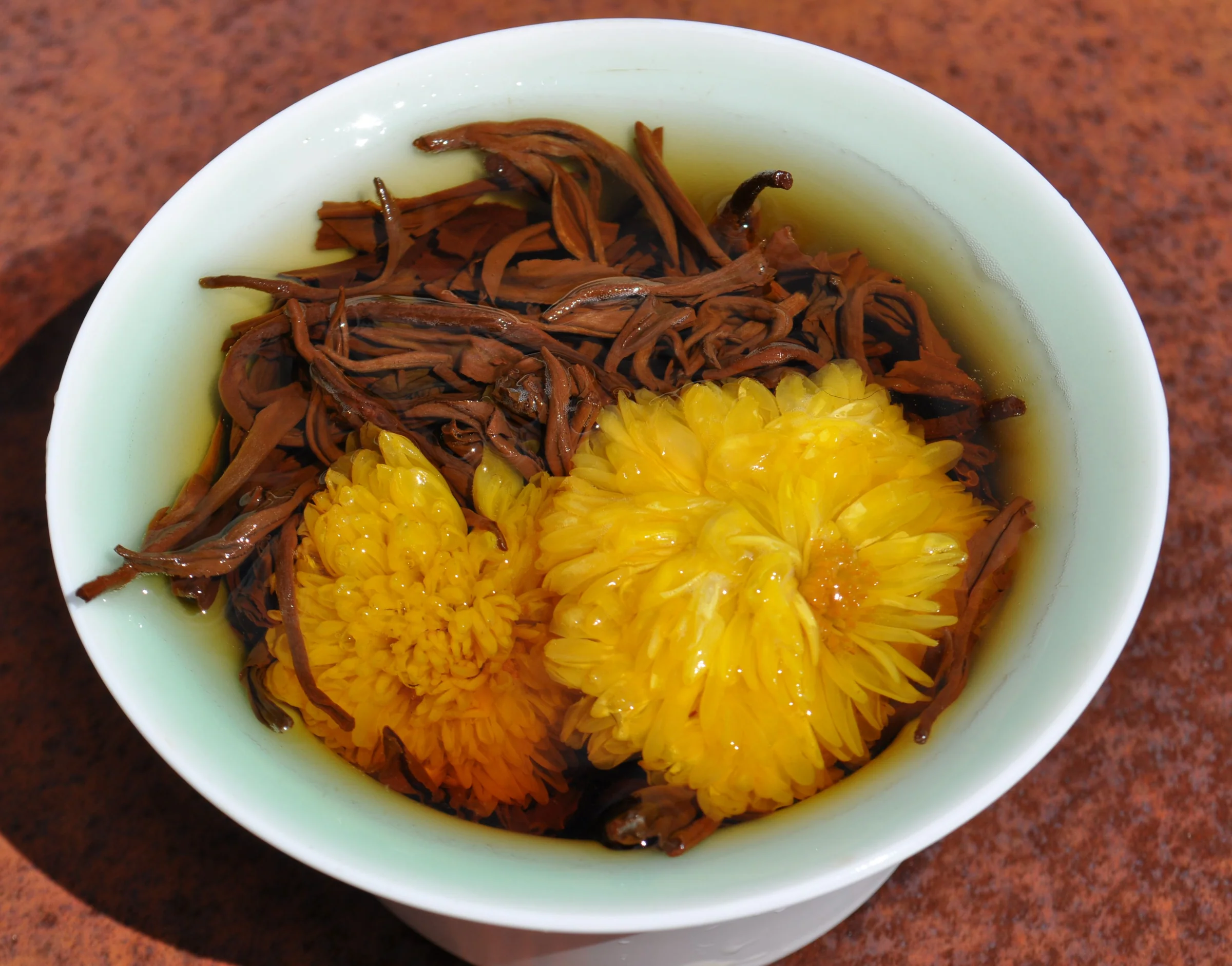
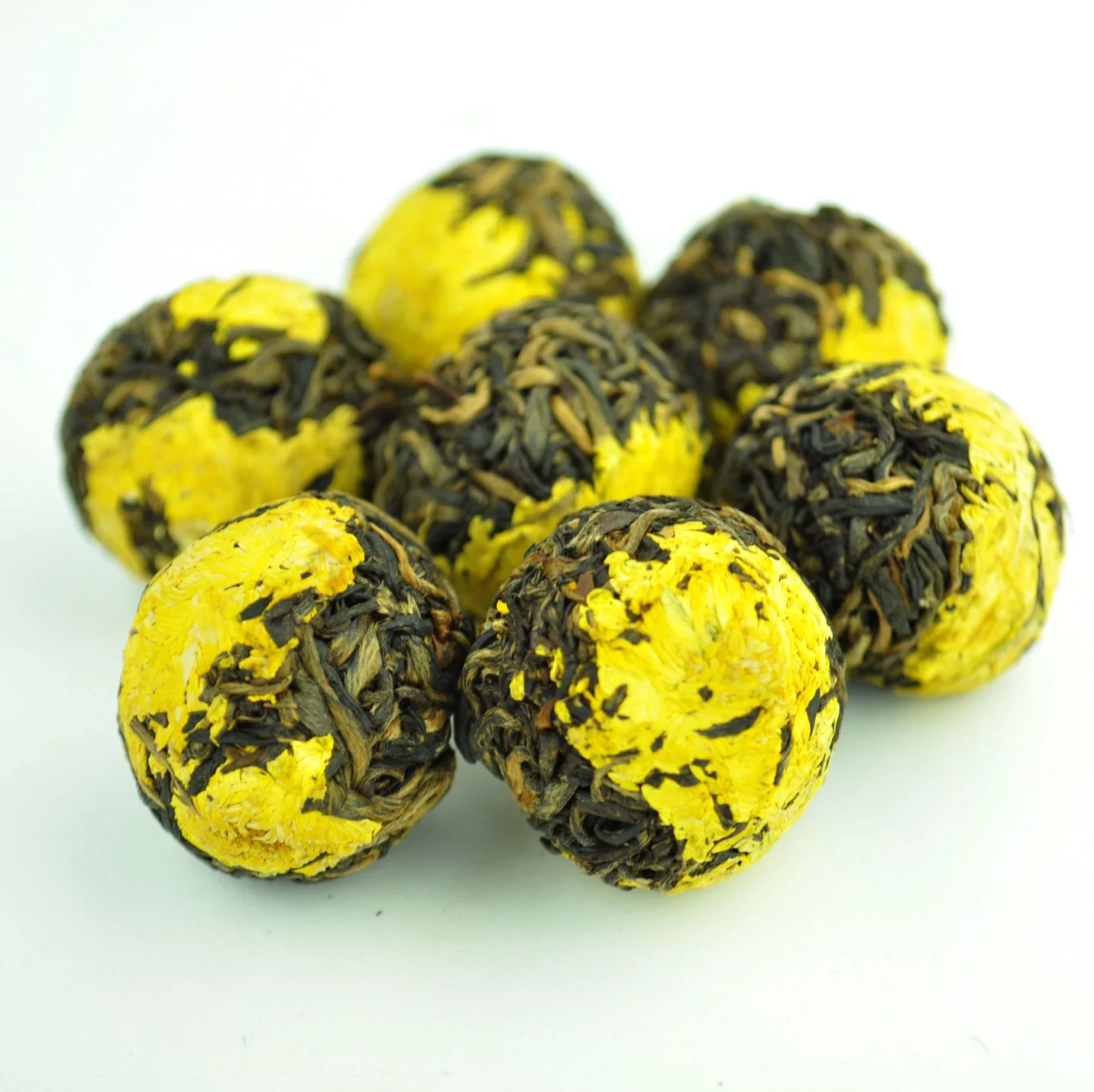






























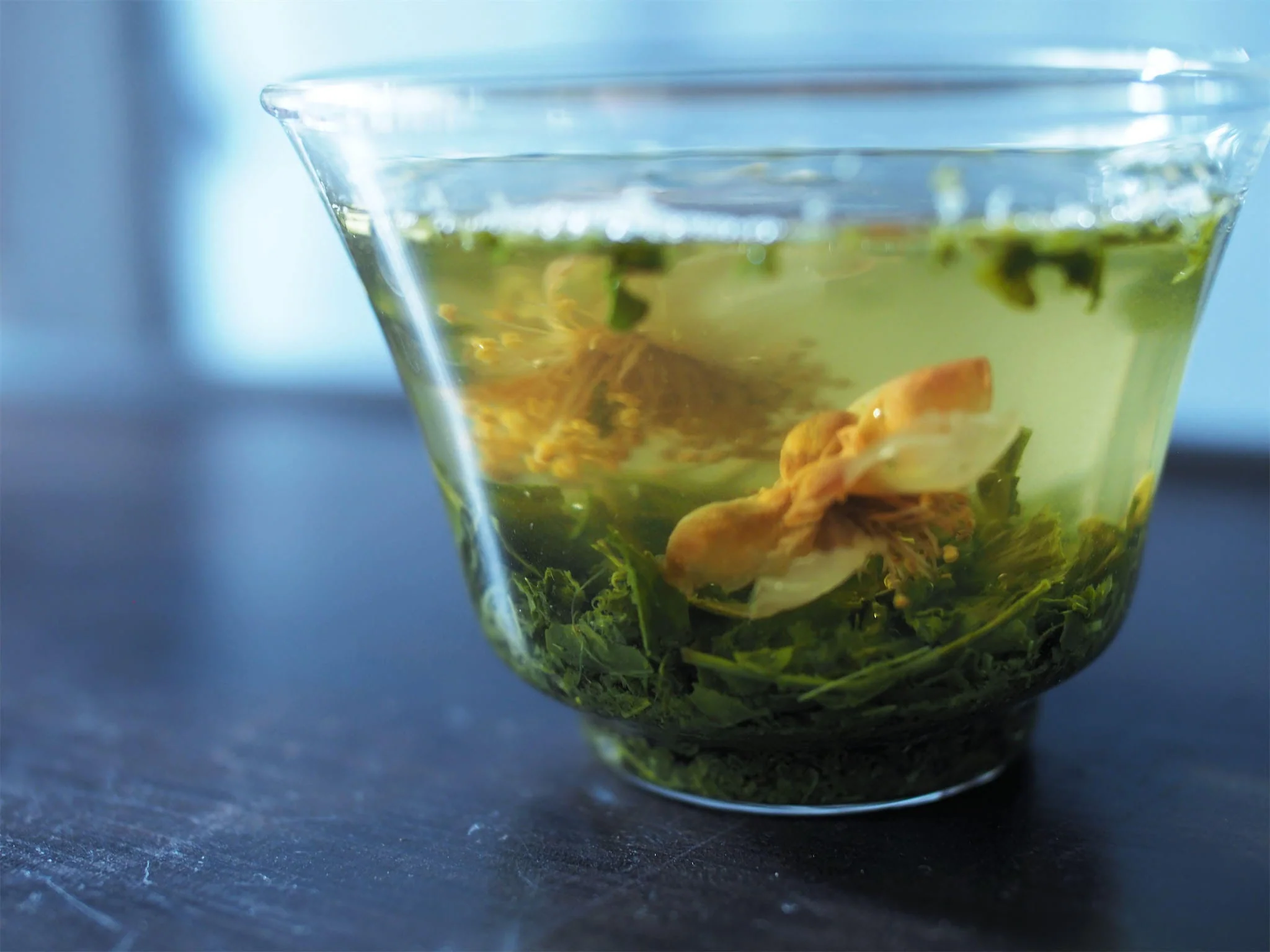



Comments